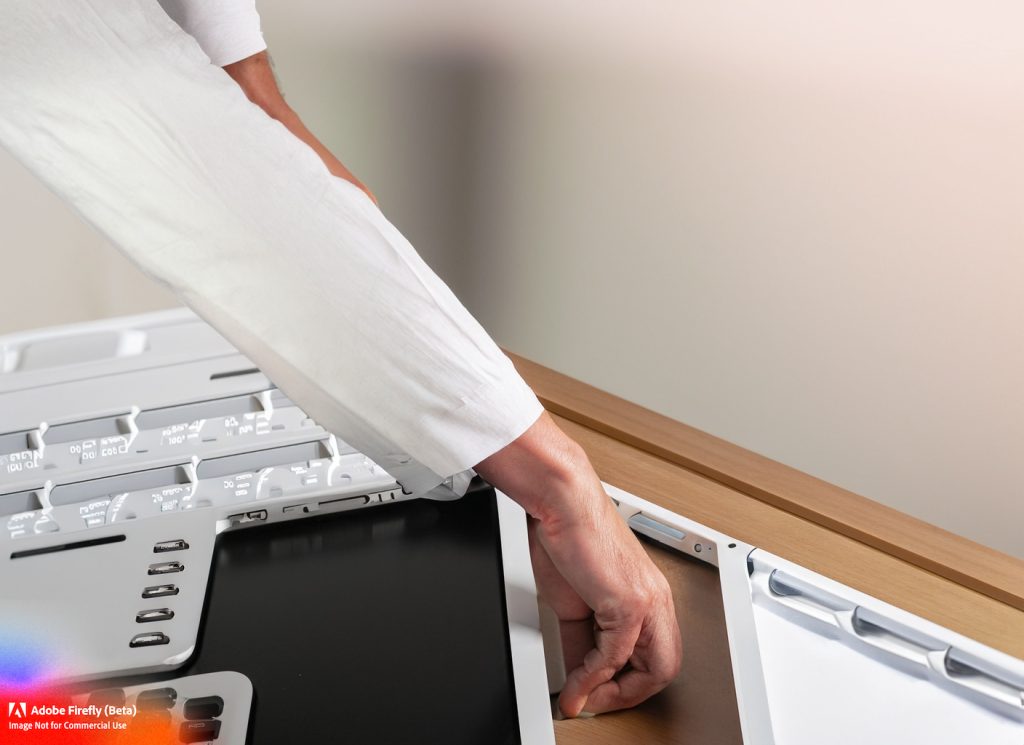Hello there, fellow desk warriors! Are you tired of battling discomfort and strained wrists during those long hours at your workstation? Fear not, because I’m here to share my expertise and guide you through the process of installing a keyboard tray under your desk. Trust me, this game-changer will revolutionize your workspace and make typing a breeze. So, let’s dive in and discover the wonders of ergonomic bliss!
Why Keyboard Trays are Essential for a Comfortable Workspace
Ah, the quest for a pain-free work experience! Keyboard trays play a pivotal role in achieving optimal ergonomics. By positioning your keyboard at the correct height and angle, they promote a natural wrist and arm alignment, reducing strain and potential injuries. Bid farewell to those pesky aches and say hello to productivity!
Choosing the Right Keyboard Tray for You
Now that we’ve recognized the importance of a keyboard tray, let’s find the perfect fit for your desk. There are several options available, so consider your needs, budget, and desk setup:
2.1. Under-Desk Mounting: A Neat and Space-Saving Solution
This method involves mounting the keyboard tray directly under your desk surface, creating a clutter-free workspace. It’s ideal for those who prefer a clean and minimalist look. Some excellent under-desk mounting options include the XYZ Keyboard Tray and the ABC Adjustable Keyboard Platform.
2.2. Clamp-On Keyboard Trays: Versatility at Its Finest
If you’re hesitant about drilling holes or have a non-traditional desk, clamp-on keyboard trays are your go-to solution. These versatile trays attach to the edge of your desk, providing easy adjustability. Check out the DEF Ergonomic Keyboard Tray and the GHI Deluxe Clamp-On Keyboard Tray for great options in this category.
2.3. Sliding Keyboard Trays: Flexibility for Your Comfort
Sliding trays offer the flexibility to adjust the keyboard’s position according to your preferences. They glide smoothly, allowing you to find the sweet spot for your wrists. Consider the JKL Sliding Keyboard Tray or the MNO Adjustable Under-Desk Keyboard Tray if you crave customization.
Step-by-Step Installation Guide
As a Keyboard Tray Specialist and Enthusiast, I can guide you through the process of installing and optimizing your keyboard tray for a comfortable and ergonomic setup. Let’s delve into the steps in more detail:
3.1. Gather Your Tools:
To begin the installation process, you will need a few essential tools. Grab a screwdriver, preferably a Phillips or flathead screwdriver, which matches the screws provided with your keyboard tray. You will also require a measuring tape to determine the correct placement of the tray. Additionally, make sure to gather any included hardware that came with the tray, such as screws, brackets, or mounting plates.
3.2. Positioning and Measurements:
Before mounting the keyboard tray, it’s important to determine the ideal placement based on your sitting or standing height. This step is crucial to ensure a comfortable and ergonomic setup. Consider your preferred typing posture and the height of your desk. Measure the distance from the edge of the desk to the desired position for the keyboard tray. It’s always wise to measure twice to avoid any errors. Take note of these measurements as they will guide you during the installation process.
3.3. Mounting Process:
The mounting process will depend on the type of keyboard tray you have and the manufacturer’s instructions. Follow the instructions carefully to securely attach the tray to your desk. Typically, this involves using the provided hardware, such as screws, brackets, or mounting plates. Ensure that the tray is aligned properly with the measurements you took earlier. Take your time during this step to ensure a sturdy and stable installation. A well-mounted tray will provide a reliable platform for your keyboard.
3.4. Adjustability and Fine-Tuning:
Once the keyboard tray is installed, you can take advantage of any adjustment features it offers. Many trays come with adjustable height, tilt, and swivel options to accommodate individual preferences and promote ergonomic comfort. Experiment with these settings to find your perfect ergonomic setup. Adjust the tray’s height so that your arms are at a comfortable and natural position while typing. Tilt the tray to a slight angle that feels comfortable for your wrists. Fine-tune the position until you achieve optimal comfort and reduce any strain on your wrists, arms, and shoulders.
Remember that ergonomics is subjective, and what works for one person may not work for another. Take the time to experiment with different settings and configurations until you find the most comfortable arrangement for your unique needs. Regularly assess your comfort and make further adjustments as necessary.
By following these steps, you can ensure a proper installation and optimize your keyboard tray to provide a comfortable and ergonomic typing experience. Enjoy your new setup and the benefits it brings to your overall well-being and productivity!
Real-Life Benefits: From Discomfort to Delight
As an avid user of a keyboard tray, let me share the transformation it brought to my work routine. Gone are the days of wrist fatigue and discomfort. I can now type effortlessly, maintaining a healthy posture throughout the day. It’s amazing how this simple addition has elevated my productivity and well-being!
Read our Review on Pull-out keyboard tray
Conclusion:
Congratulations, my friend! You’re now equipped with the knowledge and confidence to install a keyboard tray under your desk. Embrace the ergonomic revolution, bid farewell to discomfort, and welcome a whole new level of workspace comfort. Your wrists and productivity will thank you! Remember, a small adjustment can make a world of difference. Happy typing!

